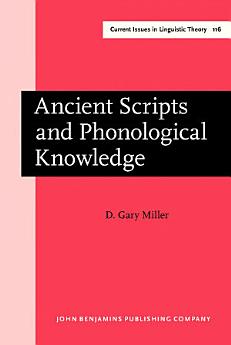Ancient Scripts and Phonological Knowledge
sep. 1994 · Current Issues in Linguistic Theory Bok 116 · John Benjamins Publishing
E-bok
139
Sidor
reportBetyg och recensioner verifieras inte Läs mer
Om den här e-boken
This study investigates the properties of several ancient syllabic and linear segmental scripts to make explicit the aspects of linguistic knowledge they attempt to represent. Some recent experimental work suggests that nonliterate speakers do not have segmental knowledge and that only syllabic knowledge is 'real' or accessible, whence the ubiquity of syllabaries. Miller disputes this by showing that such tests do not distinguish relevant types of knowledge, and that linguistic analysis of the ordering and writing conventions of early Western scripts corroborates the evidence from language acquisition, use, and change for segment awareness. By coding segments, the ancient syllabaries represented more phonological knowledge than the alphabet, which was a poor compromise between the vowelless West Semitic scripts and the vowel-redundant syllabic scripts.
A wide range of information about early scripts and their development is combined with a new theory of the syllable as 'Sonority Phrase'. The book's value is further enhanced by thorough discussion of the issues from a broad range of theoretical and applied viewpoints, including language play and change, cognition, literacy, and cultural history.
A wide range of information about early scripts and their development is combined with a new theory of the syllable as 'Sonority Phrase'. The book's value is further enhanced by thorough discussion of the issues from a broad range of theoretical and applied viewpoints, including language play and change, cognition, literacy, and cultural history.
Betygsätt e-boken
Berätta vad du tycker.
Läsinformation
Smartphones och surfplattor
Installera appen Google Play Böcker för Android och iPad/iPhone. Appen synkroniseras automatiskt med ditt konto så att du kan läsa online eller offline var du än befinner dig.
Laptops och stationära datorer
Du kan lyssna på ljudböcker som du har köpt på Google Play via webbläsaren på datorn.
Läsplattor och andra enheter
Om du vill läsa boken på enheter med e-bläck, till exempel Kobo-läsplattor, måste du ladda ned en fil och överföra den till enheten. Följ anvisningarna i hjälpcentret om du vill överföra filerna till en kompatibel läsplatta.










